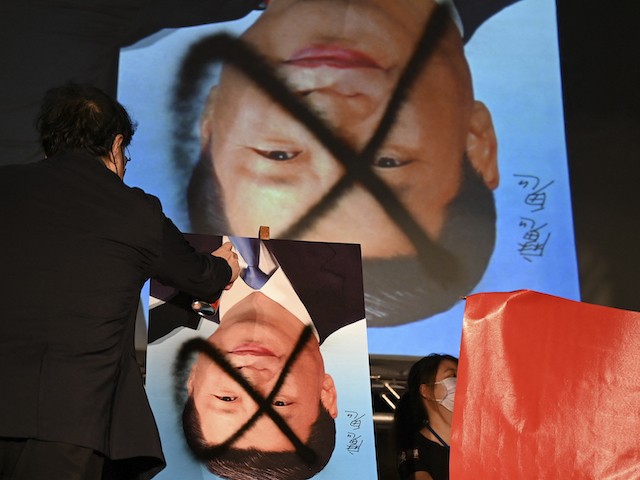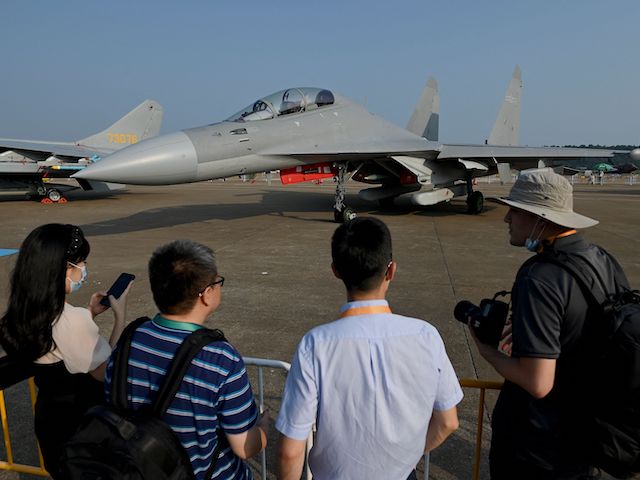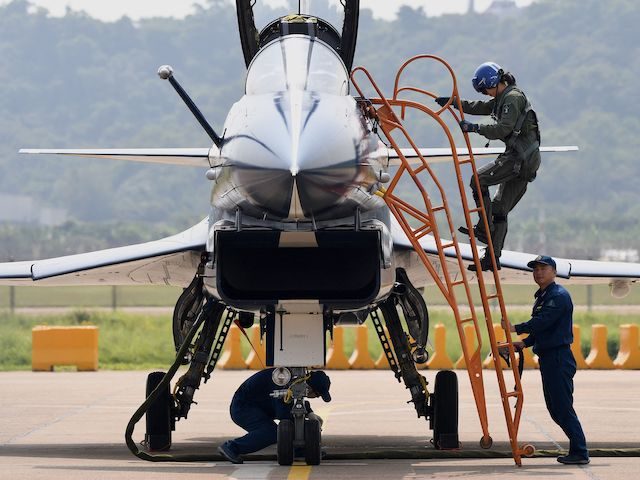The People’s Liberation Army Air Force (PLAAF) of Communist China sent wave after wave of military aircraft into Taiwan’s Air Defense Identification Zone (ADIZ) over the weekend, setting a record for China’s largest airspace incursion on Saturday with 39 warplanes and then shattering that record on Monday with 52.
52 PLA aircraft (J-16*34, SU-30*2 Y-8 ASW*2, KJ-500 AEW&C*2 and H-6*12) entered #Taiwan’s southwest ADIZ on October 4, 2021. Please check our official website for more information: https://t.co/2mC6UszTMB pic.twitter.com/WOtdFvJx8o
— 國防部 Ministry of National Defense, R.O.C. 🇹🇼 (@MoNDefense) October 4, 2021
“China has been wantonly engaging in military aggression, damaging regional peace,” Taiwanese Premier Su Tseng-chang said on Sunday.
Before this weekend, the largest Chinese incursion involved 28 warplanes on June 15. The current round of incursions began after Taiwan applied for membership in the Comprehensive and Progressive Agreement for Trans-Pacific Partnership (CPTPP), a trade pact China also wishes to join, and dominate.
Friday was the 72nd anniversary of the founding of the Communist People’s Republic of China, which might have prompted Beijing to make a massive show of force against Taiwan.

A demonstrator sprats paint over an upsidedown portrait of Chinese leader Xi Jinping during an anti-China rally outside the parliament in Taipei on October 1, 2021. (Sam Yeh/AFP via Getty Images)
On Thursday, China’s Taiwan Affairs Office quoted a poem from the Communist Party’s founding father, Mao Zedong, to attack Taiwanese Foreign Minister Joseph Wu as a liar and a “shrilling” fly.
“This kind of verbal violence, unprecedented in the international community, only highlights the overstepping of the rules of the Taiwan-related body on the other side of the Taiwan Strait and how far away it is from civilised society,” Taiwan’s Mainland Affairs Council responded.
The first wave of incursions this weekend included two of China’s nuclear-capable H-6 bombers and an anti-submarine aircraft. The second wave included more H-6 bombers and an early-warning aircraft.
A large number of China’s mainstay J-16 fighters were also involved in the flights. Analysts told the Taipei Times on Sunday the incursions might have been a “training exercise” to help Chinese fighter pilots become familiar with Taiwan’s airspace, grow accustomed to long-range flights, and practice protecting the heavy H-6 bombers.

Visitors look at a Shenyang Aircraft Corporation’s J-16 multirole strike fighter jet of the People’s Liberation Army Air Force (PLAAF) at the 13th China International Aviation and Aerospace Exhibition in Zhuhai in southern China’s Guangdong province on September 28, 2021. (Noel Celis/AFP via Getty Images)
The Chinese planes conducted threatening maneuvers near the Pratas Islands, a flashpoint location for any potential conflict between Taiwan and the mainland that is usually occupied by a small force of Taiwanese Coast Guard and Marine personnel.
The Chinese also flew over the Bashi Channel, a crucial waterway separating Taiwan from the Philippines. The U.S. occasionally sends military aircraft over the Bashi Channel to stress America’s commitment to keeping it open.
Monday’s flights brought the total number of Chinese military aircraft penetrating Taiwan’s ADIZ over the past three days to 93, grouped into five distinct waves.
“The United States is very concerned by the People’s Republic of China’s provocative military activity near Taiwan, which is destabilizing, risks miscalculations, and undermines regional peace and stability,” the U.S. State Department said on Sunday. “We urge Beijing to cease its military, diplomatic, and economic pressure and coercion against Taiwan.”

COMMENTS
Please let us know if you're having issues with commenting.